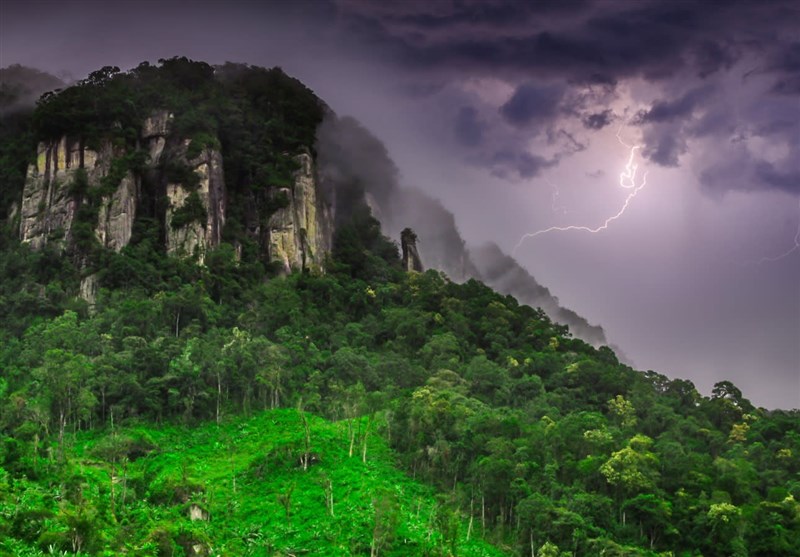Panama’s Lightning-Powered Tree Species: Nature’s Ultimate Rival Eliminator!
A fascinating study has revealed how a tropical tree species in Panama’s lowland rainforest, the tonka bean tree (Dipteryx oleifera), thrives in the aftermath of lightning strikes while other nearby vegetation suffers devastating damage. This research, published in the journal New Phytologist on March 26, highlights the unique advantages this species has developed over time. Lead author Evan Gora, a forest ecologist at the Cary Institute of Ecosystem Studies, sheds light on the remarkable resilience of this tree.
In tropical ecosystems, lightning strikes contribute significantly to tree mortality, particularly among large, mature trees that play critical roles in carbon storage and maintaining biodiversity. The findings from this study suggest that the tonka bean tree not only survives these strikes but appears to thrive in the aftermath, offering a fascinating glimpse into evolutionary resilience.
Key findings from the study include:
- Survival of D. oleifera: The tonka bean tree consistently demonstrated minimal to no damage from direct lightning strikes, contrary to neighboring plants that were often destroyed.
- Impact of Lightning: Each lightning strike resulted in the loss of over 2 metric tons (approximately 2.4 tons) of surrounding tree biomass and nearly 80% of lianas, which are parasitic vines that tend to infest the tree’s canopy.
- Unique Physical Traits: The tree’s high internal conductivity allows lightning to pass through without causing internal heat damage, akin to a well-insulated electrical wire.
- Increased Seed Production: The natural process of lightning strikes may lead to a significant increase in the tree’s lifetime seed production, estimated at a remarkable 14-fold increase.
To conduct this research, the team monitored nearly 100 lightning strikes by installing a sophisticated network of electric field sensors and cameras within the Barro Colorado Nature Monument in Panama. The array of antennas detected radio signals generated by lightning, enabling scientists to accurately pinpoint strike locations. This, combined with drone imaging and ground assessments, facilitated the monitoring of tree conditions following each event.
Over several years of observation, the tonka bean tree’s remarkable ability to withstand lightning strikes was evident. Researchers also analyzed four decades of forest plot data to understand the long-term effects of living near this resilient species. Gora noted, “Over those 40 years, there’s a quantifiable, detectable hazard of living next to Dipteryx oleifera. As a tree, you are substantially more likely to die than living next to any other large old tree in that forest.”
Interestingly, the study’s implications extend beyond Panama’s rainforests. Gregory Moore, a horticulturist at the University of Melbourne who was not involved in the study, commented on the potential applicability of these findings to other ecosystems. He stated, “This sort of work could also apply to other tree-dominated plant communities such as woodlands or low woodlands where trees are widely separated, so nothing like a tropical forest.” Moore further noted that tall trees in Australia often survive lightning strikes and wildfires, referring to them as “stags” due to their blown-out crowns, yet they can endure for centuries after being struck by lightning.
Gora and his team have plans to expand their research to include forests in Africa and Southeast Asia. They aim to explore whether similar survival advantages related to lightning strikes exist in other tree species, potentially shedding light on the evolutionary adaptations of trees in various ecosystems around the globe.
In conclusion, the tonka bean tree’s ability to withstand lightning strikes presents a remarkable example of nature’s resilience and adaptation. As researchers continue to study this phenomenon, we gain deeper insights into the intricate relationships within tropical ecosystems and the potential implications for tree survival in the face of environmental challenges.






